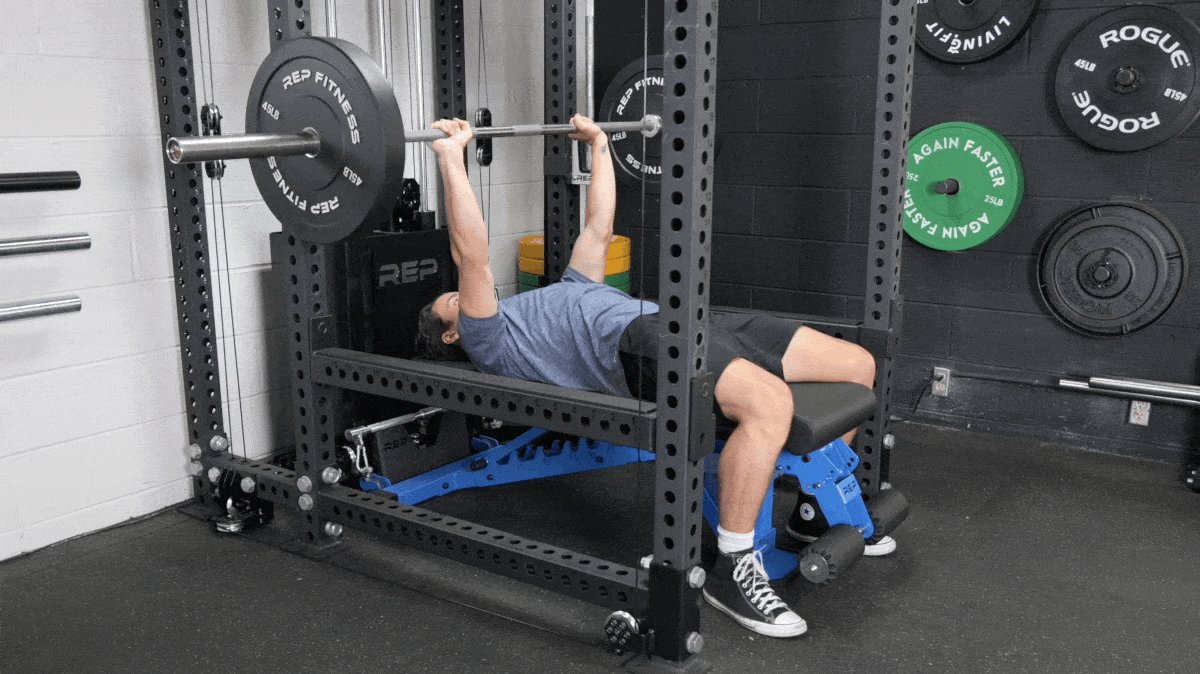When was the last time somebody asked you how much you can bench press? For some gym rats, being asked that question is like Christmas — an opportunity to flex the results you’ve achieved from all your chest workouts.
But what if your bench press max isn’t up to snuff? Sure, you might just need a new bench press program. Or, you could follow the findings of a March 2024 study published in the Journal of Strength and Conditioning Research. Spoiler: You can make one simple adjustment to your bench press technique and probably set a new personal record right away.
[Related: The Best Pre-Workout Supplements for Your Workouts]
We’re going to unpack the findings of this paper, discuss their applications and limitations, and give you a crash course on proper bench press technique so you can bump up that 1-rep max.
What the Study Says
The paper in question is titled “Flat-Back vs. Arched-Back Bench Press: Examining the Different Techniques Performed by Power Athletes” by Bartolomei & colleagues, who examined the performance effects of deliberate spinal arching during the barbell bench press exercise. (1)
Notably, the authors cite a 2023 rule change put forth by the International Powerlifting Federation (IPF) which banned excessive back arching and imposed a “depth” requirement to the bench press in powerlifting meets.
Methods
- The study followed 15 experienced strength training enthusiasts over the course of three different bench press workouts.
- Participants were experienced weight lifters who had an average 1-rep max bench of 1.38 times their own body weights.
- Athletes performed a 1-rep max bench press test at the beginning of the evaluation period, with either a flat or arched back, in a randomized order.
- They then performed a subsequent bench workout at a later date utilizing the opposite technique from the previous test.
- The third workout consisted of multiple 2-rep-max tests at different percentages of their true maxes.
- Participants were assessed on various metrics, including maximal strength, bar velocity, and EMG activation of the chest muscles.
[Read More: The Best Chest Exercises for Building Muscle, Plus Full Workouts]
Findings
- Benching with an arched back added 4.2 kilograms or 9.25 pounds to the 1-rep max of each participant on average.
- Barbell velocity was higher on the flat-backed bench press.
- Both the flat and arched bench presses elicited similar muscle activation in the chest, though triceps activation was higher when benching with an arch.
Limitations: No study is infallible. While this study was well-designed, one limitation is in the small number of participants does weaken the validity of the data. It’s also unclear if the participants adhered strictly to current IPF bench press technical rules regarding setup and technique.
What You Should Do: This study essentially argues in favor of using a spinal arch when benching, as it can help you increase strength without harming other benefits such as chest hypertrophy.
How To Bench Press for Strength

[Read More: The Best Upper Body Exercises and Workouts]
| Equipment Needed | Bench press station, barbell, weight plates, wrist wraps (optional) |
| Muscles Worked | Chest, triceps, anterior deltoid |
| Sets & Reps | 3-5 x 5 |
Nailing your bench setup is only one piece of the puzzle. We now have solid evidence that using an arch could potentially add up to 10 pounds to your bench, but you still need to make sure you’re executing the other elements of proper bench press technique as well as you can.
- Lie on your back with your feet planted firmly on the floor or tucked back with your heels off the ground.
- Ensure that the barbell is directly above (or slightly behind) your eye line and over your forehead.
- Grip the bar with a shoulder-width or slightly wider overhand grip.
- Gently pull your torso off the bench while keeping your butt on the pad, pinch your shoulders back, and lay your upper back down on the bench.
- Ensure that you have an arched spine, with a few inches of space between your lower back and the bench, and that your shoulder blades are locked into position.
- Unrack the bar (with the assistance of a spotter if you’re lifting heavy) and suspend it directly above your shoulders with your elbows locked out.
- Inhale and lower the bar down and forward until it touches the highest part of your torso, right around your sternum.
- Keep your butt on the bench and press the bar up and back until it returns to the starting position above your shoulders with your elbows locked out.
Coach’s Tip: Recruit a spotter to help take the bar off the rack if you’re maxing out. A “lift-off” will ensure you keep your shoulders pinned and can maintain your arch while getting the bar into the correct starting position.
More Fitness Research on BarBend
- Pre-Bedtime Protein Does Not Preserve Muscle Mass
- Protein Timing: Even 100 Grams at Once Is Not “Wasted”
- Today’s Children Are Weaker on Average Than Previous Generations
References
- Bartolomei S, Caroli E, Coloretti V, Rosaci G, Cortesi M, Coratella G. Flat-Back vs. Arched-Back Bench Press: Examining the Different Techniques Performed by Power Athletes. J Strength Cond Res. 2024 Mar 29. doi: 10.1519/JSC.0000000000004778. Epub ahead of print. PMID: 38551927.